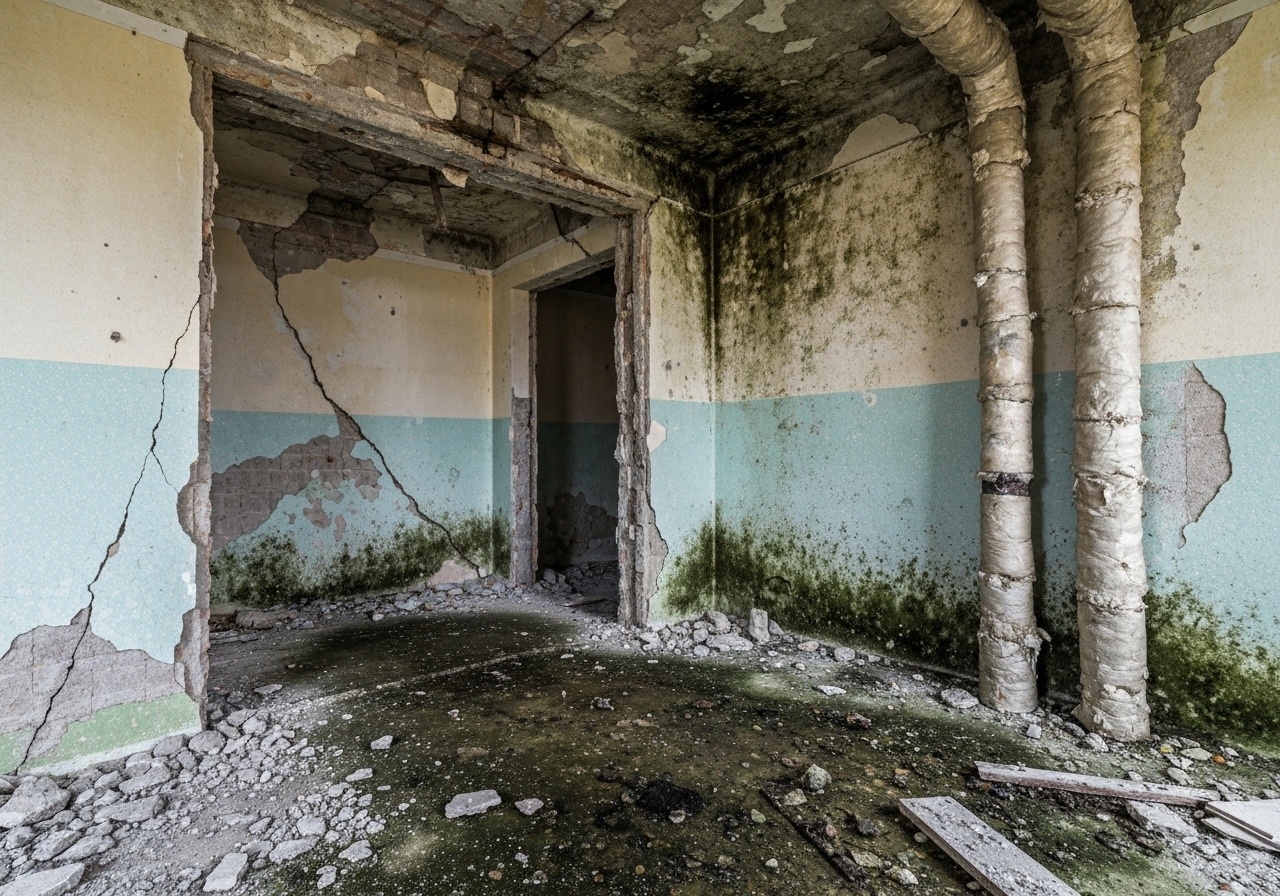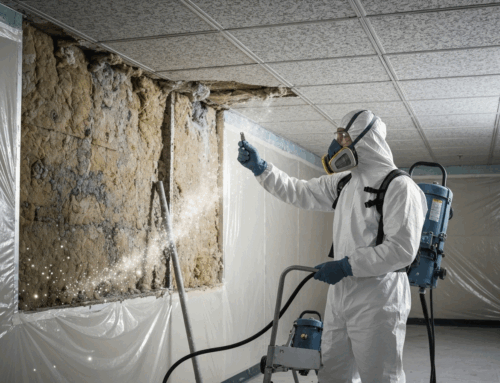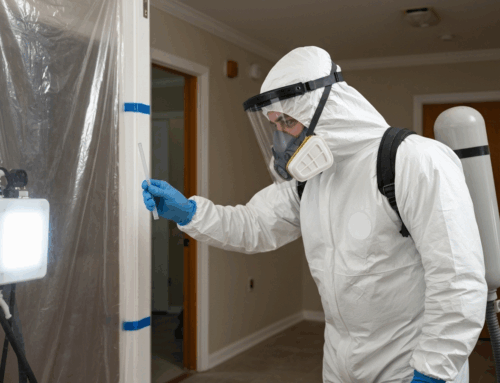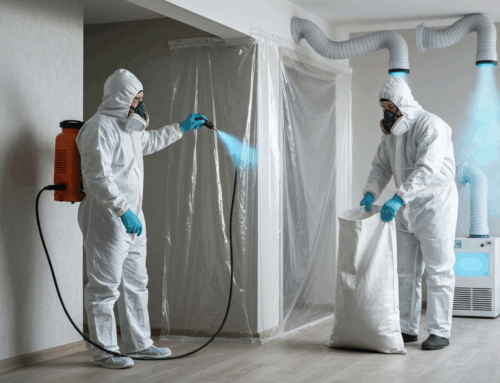The Renovation vs. Demolition Dilemma: When Hazardous Materials & Structural Issues Demand More
Property owners, developers, and businesses in South Carolina and North Carolina often face a pivotal decision: renovate an existing structure or opt for a complete overhaul through full-scale demolition over renovation. While renovation offers the allure of preserving character and seemingly saving costs, there are critical scenarios where hidden dangers and insurmountable structural challenges make demolition the unequivocally superior, safer, and ultimately more economical choice. This guide will delve into these crucial considerations, particularly when hazardous materials like asbestos and mold, or severe structural deficiencies, are at play.
Understanding the Scope: When to Consider Total Demolition
Deciding between renovation and demolition hinges on a thorough assessment of a property’s true condition. Superficial issues can often be addressed through renovation, but deeper, more pervasive problems demand a more drastic solution. Total demolition becomes the most practical and responsible option when a building exhibits:
- Extensive Structural Damage: If the foundation, load-bearing walls, or critical support systems are compromised beyond repair, a building can become a significant safety hazard. Issues like severe cracks, shifts, or water-induced rot can make a structure unstable.
- Widespread Hazardous Material Contamination: When asbestos or mold infestations are deeply embedded throughout the property, especially in structural components, attempting partial removal during renovation can be risky, ineffective, and lead to ongoing contamination.
- Outdated and Non-Compliant Infrastructure: Buildings with severely outdated electrical, plumbing, or HVAC systems that require complete replacement can often be more efficiently and safely addressed through new construction on a clean slate.
- Repetitive Damage: Properties that have suffered from repeated severe weather events, such as flooding or hurricane damage common in the Carolinas, may have underlying, compounding issues that make continuous renovation a losing battle.
In such cases, continuing to invest in a compromised structure through renovation is akin to patching a leaky bucket; the underlying problems persist, posing long-term risks and potentially costing more in the long run.
Identifying Critical Risks: Asbestos, Mold, and Beyond in Your Property
The presence of hazardous materials is often the most compelling reason for choosing full-scale demolition over renovation. Two of the most common and dangerous culprits are asbestos and mold.
Asbestos: The Silent Hazard
Asbestos, a naturally occurring mineral, was widely used in construction from the 1950s to the 1980s due to its fire-resistant and insulating properties. It can be found in a multitude of building materials, including:
- Pipe and boiler insulation
- Floor tiles and adhesives
- Ceiling tiles and textured finishes (popcorn ceilings)
- Roofing shingles and siding
- Drywall and joint compound
When asbestos-containing materials (ACMs) are disturbed—through renovation, repair, or deterioration—microscopic fibers become airborne. Inhaling these fibers can lead to severe and often fatal diseases, including mesothelioma, lung cancer, and asbestosis, often decades after exposure. South Carolina and North Carolina have strict regulations governing asbestos removal. For example, the SC DES asbestos requirements 2025 emphasize mandatory inspections and professional abatement.
Mold: The Moisture-Fueled Menace
Mold thrives in damp, humid environments, making properties in the Carolinas particularly susceptible. It can grow within 24-48 hours of water exposure from leaks, floods, or high humidity. Beyond its unsightly appearance and musty odor, mold can cause a range of health issues, including:
- Allergic reactions and asthma attacks
- Respiratory problems (coughing, wheezing)
- Skin and eye irritation
- Fatigue and headaches
Extensive mold growth can also compromise structural integrity by feeding on organic materials like wood and drywall. Professional mold remediation often involves identifying and rectifying the moisture source, thorough cleaning, and drying to prevent recurrence. Ignoring widespread mold can lead to significant structural damage and persistent health risks for occupants.
Other Hazardous Materials
Beyond asbestos and mold, properties can contain other hazardous materials like lead-based paint (common in homes built before 1978), mercury-containing devices, and refrigerants. Proper identification and removal of all these substances are critical for safety.
Safety First: The Undeniable Case for Full-Scale Demolition Over Renovation When Hazards Lurk
When hazardous materials or severe structural issues are present, safety becomes the paramount concern. Attempting to renovate a building with extensive contamination or instability can put workers, occupants, and the surrounding community at severe risk. Controlled full-scale demolition over renovation offers a more secure environment for managing these dangers.
During a renovation, disturbing compromised areas can inadvertently release hazardous fibers or spores into the air, leading to widespread contamination. This uncontrolled exposure poses immediate health threats and can necessitate far more costly and complex remediation efforts later. The most convincing evidence for credibility in hazardous material management is a perfect safety record achieved through unwavering adherence to established protocols and regulations. It’s not just about what you do, but how meticulously you do it, ensuring every fiber and spore is contained.
With full-scale demolition, a controlled environment can be established from the outset. Specialized equipment and highly trained professionals can systematically deconstruct the building, ensuring hazardous materials are identified, contained, and removed according to stringent safety protocols before general demolition proceeds. This minimizes exposure risks and prevents the spread of contaminants, providing a clean and safe site for new construction.
Financial & Practical Considerations: Why a Clean Slate Can Be Cheaper in SC & NC
While the initial cost of full-scale demolition over renovation might seem higher, a comprehensive financial analysis often reveals that a clean slate can be the more economical and practical long-term solution, especially in the Carolinas with their unique climate challenges.
- Unforeseen Costs in Renovation: Older properties frequently hide a myriad of problems beneath their surfaces. During renovation, discovering unexpected widespread asbestos, severe mold behind walls, extensive wood rot, or non-compliant structural elements can quickly inflate budgets and timelines, leading to frustrating and costly delays.
- Scope Creep and Compounding Issues: What starts as a targeted renovation can spiral into a full-blown reconstruction as one problem leads to another. For instance, addressing mold might uncover a long-standing leak, which in turn reveals structural damage.
- Long-Term Maintenance and Efficiency: An older, renovated property may still have inherent inefficiencies in insulation, energy systems, or layout, leading to higher ongoing utility and maintenance costs. A new build can incorporate modern, energy-efficient designs and materials, offering significant long-term savings.
- Resale Value: A new construction, free from the historical baggage of hidden hazards and structural concerns, often commands a higher market value and attracts buyers more readily than a heavily renovated older home, particularly in competitive markets across SC and NC.
From a practical standpoint, starting fresh allows for complete freedom in design, layout, and material selection, ensuring the new structure perfectly meets current needs and future demands without compromise.
Navigating Regulations: Permits, Compliance, and Peace of Mind in the Carolinas
Whether undertaking renovation or demolition in South Carolina or North Carolina, navigating state and local regulations is paramount. However, when hazardous materials or structural issues necessitate extensive intervention, the regulatory landscape for demolition becomes particularly stringent. Ignoring these requirements can lead to severe fines, legal liabilities, and significant project delays.
Key regulatory aspects in the Carolinas include:
- Asbestos Notification and Permits: For many demolition projects, especially in commercial or public buildings, a written notification must be submitted to the South Carolina Department of Environmental Services (SCDES) or the appropriate North Carolina authority (like NCDHHS or NCDOL) prior to demolition. This often includes a mandatory waiting period and a certified asbestos survey report detailing any asbestos-containing materials (ACMs). You can learn more about specific requirements in South Carolina demolition notification and permit requirements and N.C. Asbestos Rules, Regulations & Ordinances.
- Local Building Permits: In addition to state environmental notifications, local municipal and county building departments require specific demolition permits. These address structural safety, zoning ordinances, and proper debris management.
- Utility Disconnection: Before any demolition, all utilities (water, sewer, gas, electricity) must be safely disconnected and verified by the respective utility companies.
- Proper Disposal: All hazardous waste, especially asbestos, must be packaged, labeled, and transported to landfills specifically permitted to accept such materials, in strict accordance with federal and state laws.
Working with professionals who possess a deep understanding of these complex regulations ensures that your project remains compliant, avoiding costly pitfalls and providing crucial peace of mind.
Building a Safer Future: Long-Term Value and the Benefits of a Fresh Start
The decision to pursue full-scale demolition over renovation is not just about addressing immediate problems; it’s an investment in a safer, more valuable future. By choosing a fresh start, property owners in SC and NC can reap numerous long-term benefits:
- Elimination of Hidden Hazards: A new build ensures the complete absence of legacy hazardous materials like asbestos and lead paint, providing a healthier environment from day one.
- Superior Structural Integrity: New construction adheres to the latest building codes and engineering standards, resulting in a more resilient and durable structure, better equipped to withstand environmental challenges like severe weather.
- Optimized Design and Functionality: A blank canvas allows for custom design that precisely meets modern needs, incorporating open layouts, improved accessibility, and optimal space utilization.
- Enhanced Energy Efficiency: New homes and commercial buildings can be designed with advanced insulation, high-efficiency HVAC systems, and sustainable materials, leading to significantly lower energy consumption and reduced utility bills.
- Increased Property Value and Marketability: Newly constructed properties typically have higher market values and are more attractive to buyers and tenants, translating to a quicker sale or lease and a better return on investment.
- Reduced Maintenance and Repair Costs: A new building means fewer unexpected repairs and lower ongoing maintenance expenses compared to continuously patching up an aging structure.
Ultimately, opting for demolition when conditions warrant it is a strategic decision that prioritizes safety, health, and long-term financial gain.
Your Trusted Partner in Demolition: Why Choose Piedmont Quality Air
For property owners, managers, and contractors in South Carolina and North Carolina facing the complex decision of full-scale demolition over renovation, particularly when hazardous materials or structural concerns are involved, choosing the right partner is crucial. Piedmont Quality Air specializes in comprehensive hazardous material removal and interior demolition services, ensuring a safe, compliant, and efficient process.
Our team comprises experienced and highly trained professionals who utilize specialized equipment and strictly adhere to all federal and state regulations. We understand the unique environmental considerations in the Carolinas, from addressing persistent humidity that fuels mold growth to navigating the nuances of asbestos abatement laws. Our commitment is to minimize disruption while upholding the highest safety standards for every project.
Whether your property requires professional asbestos removal, thorough mold remediation, or selective interior demolition to prepare for a new vision, Piedmont Quality Air provides the expertise necessary for a healthy and safe environment, from initial assessment to final site clearance. Our dedication to safety, compliance, and client satisfaction makes us the trusted choice for transforming compromised properties into safe, valuable assets.
Visit our Contact Us page.






